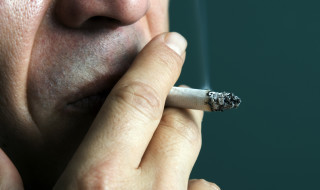
More than two-thirds of patients with mouth cancer who had a human papilloma virus (HPV) test gave a positive result, a study found.
Health chiefs are under growing pressure to extend the HPV vaccine – given to all year eight girls since 2008, to prevent cervical cancer – to boys aged 12 and 13.
The campaign follows warnings of a near ‘epidemic’ in head and neck cancers, including of the mouth, lips and salivary glands, when the virus is transmitted – by intercourse, including oral sex.
Extent of the HPV virus
Now a national head and neck cancer audit has, for the first time, examined the extent of the HPV virus in patients with cancer of the oropharynx, the part of the throat directly behind the mouth.
The oropharynx includes the soft palate, the base of the tongue and both the side and back walls of the throat.
Drinking alcohol and smoking or chewing tobacco increases the risk of oropharyngeal cancer, but many cases were known to be linked to a HPV infection.
The audit, managed by the Health and Social Care Information Centre (HSCIC), looked at 1,018 patients with oropharyngeal squamous cell carcinoma (OPSCC), of which 803 had a HPV test performed.
Of those patients, 72.8% had a HPV positive result.
The report concludes: ‘These findings match the smaller UK-based studies and confirm the high frequency of previous HPV infection in oropharynx cancer patients.
‘There remains significant work to ensure that all appropriate OPSCC patients are screened.’
HPV vaccine
The Joint Committee on Vaccination and Immunisation (JCVI) has been expected to reach a decision on whether to extend the HPV vaccine to adolescent boys this year.
However, a decision was put back until 2017 at the earliest – with this year’s verdict to cover only whether to give the vaccine to ‘men who have sex with men’.
Sir Paul Beresford, the chairman of the all-party parliamentary group on dentistry, has led criticism of the two-year delay, branding it ‘short-sighted’.
He said, earlier this year: ‘These cancers are extremely hard to treat, are devastating for the patient and survival rates are not great.
‘Effectively, 50% of the population are not being given the added protection that could so easily be available.’
The audit also found the four-year survival rate from head and neck cancers ranged from over 60% (voice box) to only 33% (hypopharynx – where the larynx and oesophagus meet).
Waiting times for radiotherapy treatment have improved on average from 42 days to 41 days, but one in four patients are waiting 54 days or more from diagnosis to start their treatment.
Richard Wight, the audit’s lead clinician, said: ‘Audit provides an important tool in promoting standards of care for patients with head and neck cancer and has now become an excepted part of the routine workload of a head and neck multidisciplinary team.’


